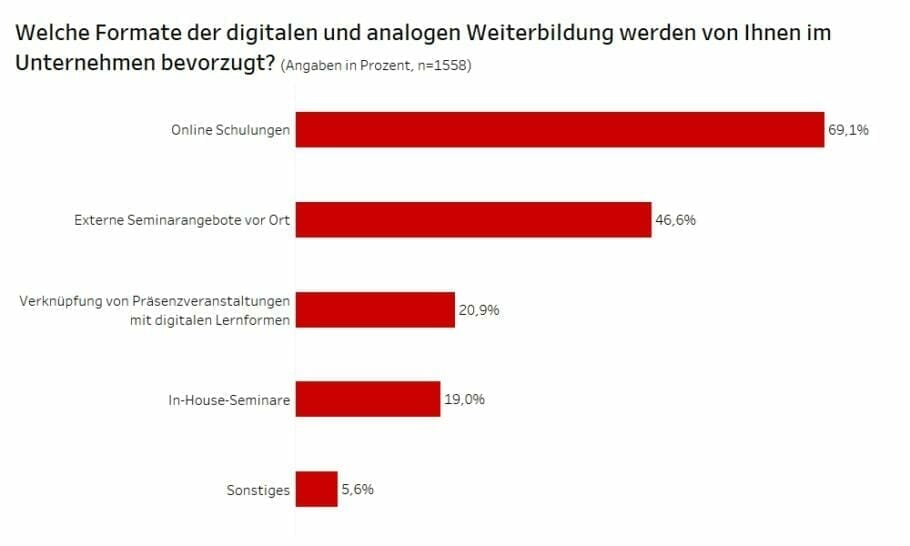More success stories?
Im Shop or our Newsletter you are guaranteed to find what you are looking for:

For their successful, good life Information you really need: Government-funded publisher, awarded the Global Business Award as Publisher of the Year: Books, Shops, eCourses, data-driven AI-Services. Print and online publications as well as the latest technology go hand in hand - with over 20 years of experience, partners like this Federal Ministry of Education, customers like Samsung, DELL, Telekom or universities. behind it Simone Janson, German Top 10 blogger, referenced in ARD, FAZ, ZEIT, WELT, Wikipedia.
Disclosure & Copyright: Images created as part of a free collaboration with Shutterstock.
By Simone Janson (More) • Last updated on October 18.04.2024, XNUMX • First published on 11.12.2020/XNUMX/XNUMX • So far 4285 readers, 1211 social media shares Likes & Reviews (5 / 5) • Read & write comments
How self-determined Things to Learn not working, many already know. So how could it go? Employees just get books and digital media thrown in front of you and the instruction "So, teach yourself what you need to know"? No, It is not that easy.

Lifelong Learning and Further Training are considered the key to success. With the digital Transformation processes and procedures are constantly changing. An education or Study alone, despite the shortage of skilled workers and the "war for talent", are no longer enough to do it all work life to draw on what has been learned. Instead, employees and employers alike must face new challenges Background, new approaches, technologies and insights in order to compete in the (labour) markets.
Digital learning opportunities are on the advance. Nevertheless, there is a discrepancy between the social desirability of digital offers in Companys and the actual usage:
Here are a few figures: In a survey of 1.300 entrepreneurs, the software company Lexware found out what the motives for further training are in companies and what significance digital learning formats have. Most of the entrepreneurs surveyed have received further training in recent years - mostly with the help of e-learning courses and webinars (56,3%) or seminars and courses (48,2%). Almost every fifth respondent (18,7%) stated that they had not participated in any further training measures in the past two years.
44 percent of those surveyed are already using digital learning opportunities. If you include the entrepreneurs who to planto rely on digital learning offers in the future or at least to discuss it, then it is more than two out of three respondents (70 percent). In addition to the professional and social Expertise (86%) are legal and technical issues (46,2%) and the use of Technology (42,7%) the main motivators for professional Further Training. Soft skills and topics for personal development play a lesser role than practice-oriented knowledge that is supposed to have a direct benefit for the company.
The main advantage of using digital learning offers is the flexibility in terms of location and time (82,9%). Further arguments followed at a certain distance are the topics of access to learning (69,6%), individual learning content (65,3%) and cost savings (64,5%). According to the respondents, the main obstacles to the introduction of digital learning are the lack of digital understanding on the part of employees (29,8%) and the lack of individual support (27,7%).
Learning is also a part of developing new business ideas Success factor. The main focus here is on internet research (70%), followed by specialist media (60%) and in third place further training formats (40%). The main requirements for further training and learning content are direct applicability (85%) and high practical relevance (88%). In addition, the subjects wanted compact and efficient Transfer of knowledge (62,6%).
That digital learn like this successfully is certainly also related to how learning is in our Brain works: Because first of all people have to be motivated to change something in their previous situation or to want to learn something. And from a neurological point of view it works like this: In our brain, the limbic checks System in everything that we should do, whether that required Behavior promises a reward or at least helps to avoid displeasure. That happens on Basics past successes or failures.
In other words, if you want to continue your education, it must appear attractive based on your previous experience; you must have an incentive, a positive, easy one Stress feel. Only then are we ready to get started. Therefore, learning must not be too easy!
Because in the brain, the neuromodulatory system controls our readiness for receptivity through the release of certain neurotransmitters such as noradrenaline, dopamine, serotonin and acetylcholine Motivation and our interest. And that only happens when we learn one Objective in Eyes have, which appears to us as a reward.
Over time, we learn more and more to reward ourselves - for example, by always setting ourselves new incentives that lead to new rewards. In this way, we continue to learn self-motivated.
On the other hand, too much pressure and stress lead to a sense of threat and fear of failure, thus inhibiting the success of learning. Because then we have the feeling that, despite all the effort no reward.
And all the impressions that we come with Anxiety connect, are stored in the so-called tonsil core, whose task it is to prepare for fight or flight when recalling the stored negative impressions. In this situation, it is then no longer possible to deal creatively with knowledge. On the contrary, in Future we will do everything we can to avoid similarly stressful situations.
The perfidious: Exam results, certifications and participant voices have one thing in common: They say nothing at all about the learning success. Really! They do not guarantee that the further training was really good. Because about the practical Implementation on the job, and that's what learning success is all about, after all, they don't say anything. Only: That's what matters!
Because they usually only say something about the training itself - the later implementation in everyday work and in the company is almost never included in the evaluation. But that is exactly what would be important to be able to really assess the success of further training.
Reason: You can actually learn best in your usual professional environment or in an environment in which you feel comfortable. This has several reasons, as the research results of the neurobiologists prove:
First we learn People actually much better with the practical model instead of just getting knowledge chewed up in theory. When learning from a model, you not only have to observe actions, you also have to understand them, supplement them and even correct them if necessary. In an optimal learning environment feel we are motivated to try something and try again if we fail.
Natural curiosity acts as an optimal drive: the more often we experience it, a Problem solving it yourself, the more self-confidence grows.
Because as long as we are looking for something, there is a certain restlessness in our brain. Then, when the problem is solved, the excitement gives way to calming down and a feeling of satisfaction, because certain messenger substances are released in the brain that trigger feelings of happiness.
That way you get even bigger Lustto try something new again. And that's why people learn particularly well when they can determine the subject matter themselves based on their previous professional experience.
Because then they can do it themselves decideknow what new experiences are of interest to them, and they can link the experiences made in this way particularly well to the knowledge they already have and thus optimally expand their behavioral patterns. Independent learning, which builds on our previous professional experience as far as possible, is therefore the best form of further education.
 Simone Janson is publisher, Consultant and one of the 10 most important German bloggers Blogger Relevance Index. She is also head of the Institute's job pictures Yourweb, with which she donates money for sustainable projects. According to ZEIT owns her trademarked blog Best of HR – Berufebilder.de® to the most important blogs for careers, professions and the world of work. More about her im Career. All texts by Simone Janson.
Simone Janson is publisher, Consultant and one of the 10 most important German bloggers Blogger Relevance Index. She is also head of the Institute's job pictures Yourweb, with which she donates money for sustainable projects. According to ZEIT owns her trademarked blog Best of HR – Berufebilder.de® to the most important blogs for careers, professions and the world of work. More about her im Career. All texts by Simone Janson.
Leadership must convey benefits ...
I found your post interesting, so I tracked it back to my blog :-) ...
Freshly blogged: Series - self-determined learning better: That's how learning motivation works!
Series - Self-determined learning is better: This is how learning motivation works !: So far it has been ...
Post a Comment